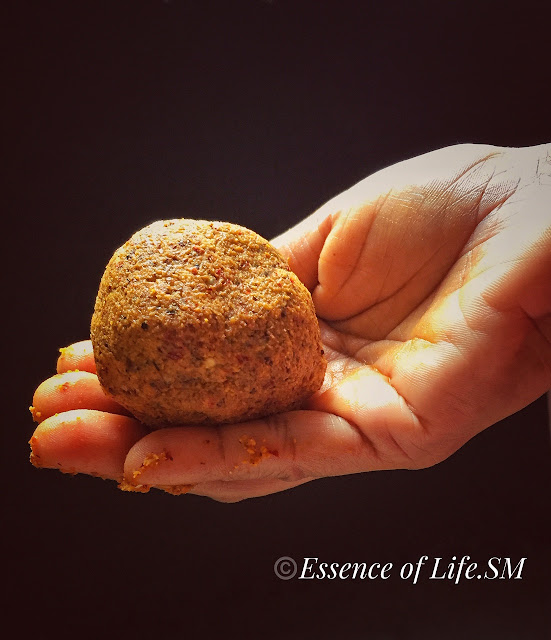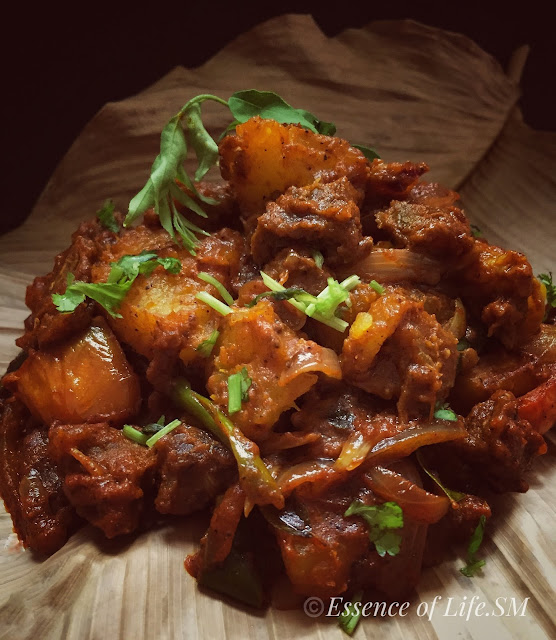 |
| APPAM RECIPE |
"Appam" is indigenous to Kerala, an integral part of Kerala Cuisine. A signature dish popularized by Kerala Syrian Christians. A popular breakfast dish equally competent along with Puttu & Idiyappam. Not only that it is served as a breakfast dish, but it also takes a special place in most of the Festive Menu List. A day of importance/special occasion in a Christian household, surely calls for Appam & Stew in the menu.
Origin of Appam - though a topic of debate, whether Appam originated from Sri Lanka or from Tamil Nadu. There is also a theory that it originated from the Kodavas whose cuisine and culture are similar to the Malayali Syrian Christians or the Mangalorean Catholics. Kodava Cuisine has traces of Bunts, Odia, Telugu & Bengali Cuisine. Some even go to the extent that it was brought forth by the Portuguese. But a recipe with Rice, Coconut & Toddy, I really doubt. Maybe it could even be rephrased as, did the Portuguese take the Appam to Sri Lanka & Malaysia, where we can find similar recipes like Appam Balik, Apam Beras/Nasi, Apam Kampung/Tembam, Apam Pisang, Apam Gula Hangus, etc., & etc., Burmese Ah-Boh, Indonesian Serabi, Thailand's Khanom Khrok all fall under the same genre.
It sounds so similar to most of the Kerala Appams like Vellayappam, Vattayappam, Paalappam, Kallappam, Kalathappam, Idiyappam, Pesaha Appam, Unniyappam, Neyyappam, Kuzhalappam, Achappam...
Ha... so many Appams in list.
If you are looking for an out of an Indian theory there comes Ethiopian Injera, made with Teff Flour(which belongs to Finger Millet/Ragi family) and the Yemeni Lahoh made from Sorghum(which is Jowar/Cholam). Both are fermented foods. Both regions had trade contacts with Kerala. Both foods are visually almost identical to our own Appam.
I have already posted a recipe for Vellayappam/Appam earlier which is prepared with Rava Kurukku/Semolina Paste. This Appam recipe is one of the simplest and the most traditional recipe which I got from Winnie Aunty. We can use Toddy in the batter instead of Yeast to induce fermentation. This Appam batter yields, lacy, crispy edges with a soft fluffy centre.
For more recipes from GODS OWN COUNTRY - KERALA click here...
Cuisine - South India, Sri Lanka & Southeast Asian
Course - Main Course
Difficulty - Medium
Yields - 30-35 Appams
Author - SM
Preparation Time - 15-20 Minutes
Soaking Time - 4-5 Hours
Fermentation Time - 10-12 Hours/Overnight
WINNIE AUNTY'S SIMPLE & EASY APPAM RECIPE
 |
WINNIE AUNTY'S SIMPLE & EASY APPAM RECIPE |
INGREDIENTS:
Raw Rice - 2 CupsCooked Rice - 3/4 Cup
Coconut - 1 Cup
Salt - To Taste
Yeast Mix :
Yeast - 1/2 TspnWater - 1/4 Cup
Sugar - 2 Tspn
METHOD :
Yeast Mix :
- Activate the yeast by putting it in lukewarm water along with 2 Tspns of Sugar.
- Leave it aside until it ferments. (For about 15-20 Minutes).
For the Batter :
- Wash & Soak the Raw Rice for about 4-5 hours.
- Once soaked, drain the Rice. (Can use the water used for soaking to grind the batter)
- Grind Raw Rice, Cooked Rice and Coconut until it turns into a very smooth batter.
- Add the Yeast Mix to the above batter.
- Finally, *add Salt and mix the batter well.
- Store it in an airtight container and leave it aside for another 10 - 12 hours or overnight to ferment.
To make Appam :
- Heat the Appam pan.
- Pour a ladle full of batter into the pan.
- Swirl the pan once, in such a way that the batter spreads around.
- The centre of the Vellayappam should be slightly thicker than the edges.
- Cover the pan with the lid and let it cook for around two minutes.
- The flame should be kept at low.
- Once the edges start to brown and the centre is cooked, the Appam/Vellayappam is ready.
- Remove the Appam/Vellayappam from the pan.
- Can serve with Stew, Red Coconut Chutney, Egg Curry with Coconut Milk or any curry of your choice.
- Appam/Vellayappam tastes great with sweetened Coconut Milk or simply serve it with Sugar/Brown Sugar.
- Can also serve Steamed Bananas/Nendhra Pazham Puzhungiyathu/Nendhra Pazham cooked in Sugar Syrup along with Cloves as a side dish for Appam/Velleyappam.
For more TIFFIN ITEMS, Click here ...
NOTES :
- Can use warm water to grind the batter, this is to speed up the fermenting process.
- The Appam batter should be slightly thinner than the Dosa batter.
- Swirling the batter in the pan ONCE, yields crispy edges and soft, fluffy centres.
- Activate the yeast in lukewarm water. Do not use boiling water for the purpose.
- Adding Sugar to the Yeast Mix will speed up the activating process.
- If you need to quicken the fermenting process, *avoid adding Salt to the Appam/Vellayappam batter until it ferments.
- Add Salt just before making Appam/Vellayappam.
- Fermentation time depends upon the weather. Adjust accordingly.
SHOP RELATED PRODUCTS:























